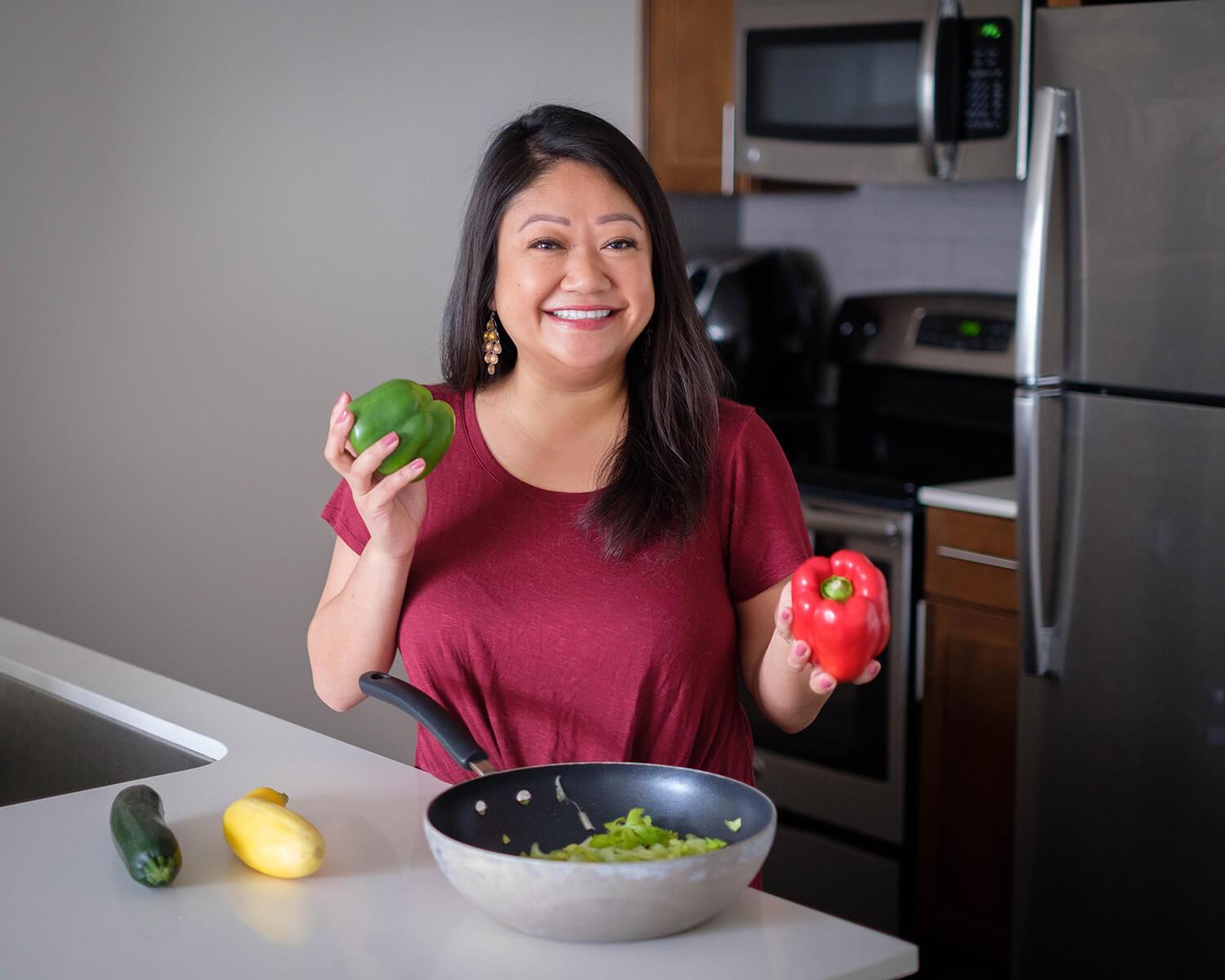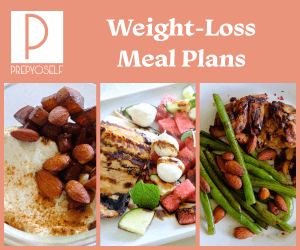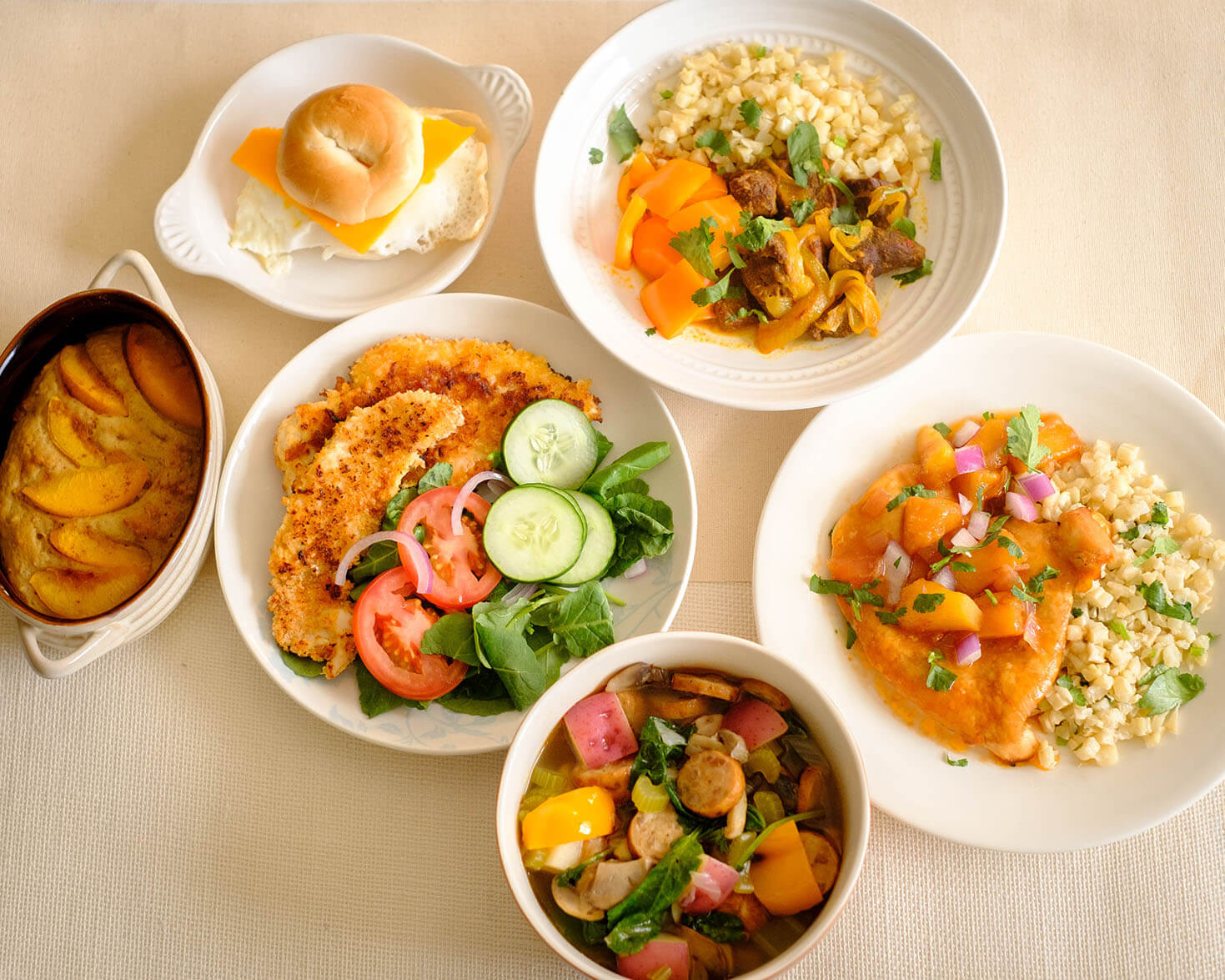
What is Meal planning?
Meal planning is a tool that helps you determine what you’re going to eat throughout the week instead of deciding day to day. Planning out your meals in advance helps you ensure that you are going to eat healthy and stay on track. It is a great way to choose foods that will be most helpful with your health. It is also a great way to help you save time and money by planning out what ingredients you need for the week. Just like anything in life, a little preparation goes a long way.
When it comes to deciding on a meal plan method, it is important to know what goals you want to achieve.
- Do you want to lose weight?
- Do you want to eat healthier?
- Do you want to save time or money?
Knowing your goals will help you narrow down what kind of meals you will need to plan out.
1. Start with deciding how many meals and what meals you plan to cook and when you plan to eat out.
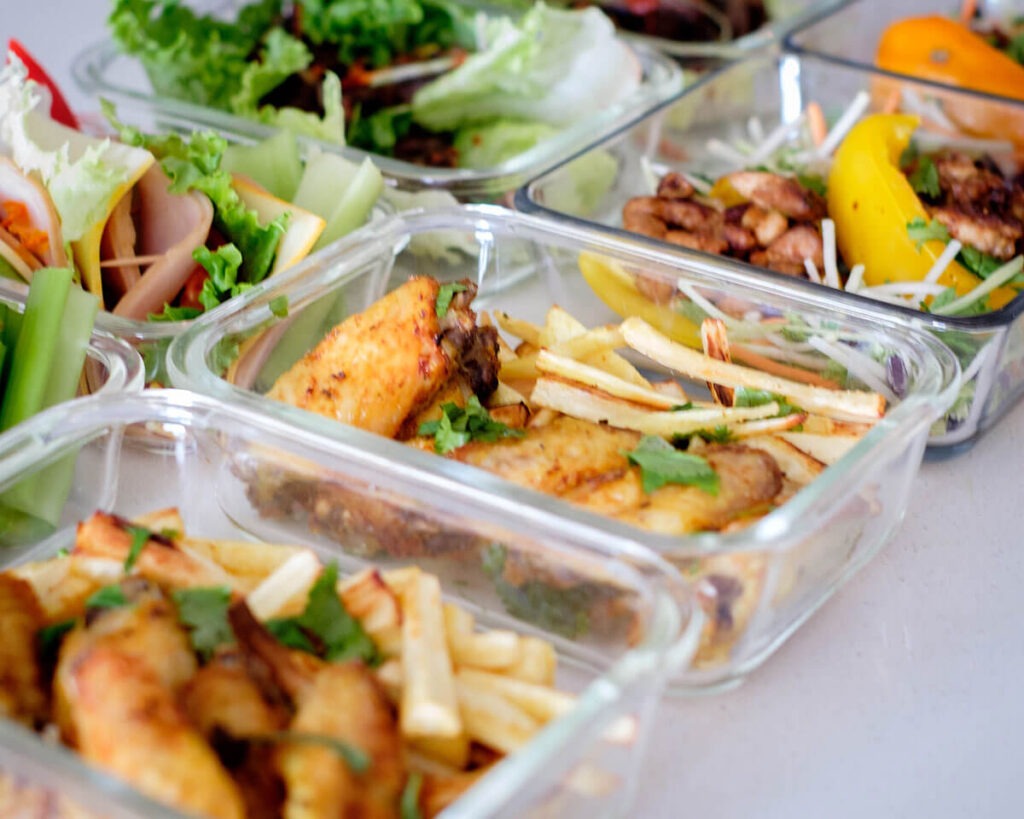
Start small and start with specific meals you want to plan out first. Look ahead at the week’s schedule and organize your meals around these days. For example, does Monday need to be a meal for a good sit down dinner, does today need to be something quick and easy right before. Determine if you want to prepare all your ingredients from scratch or get pre-packaged items
2. Ensure cooking methods vary and consider what equipment you have available
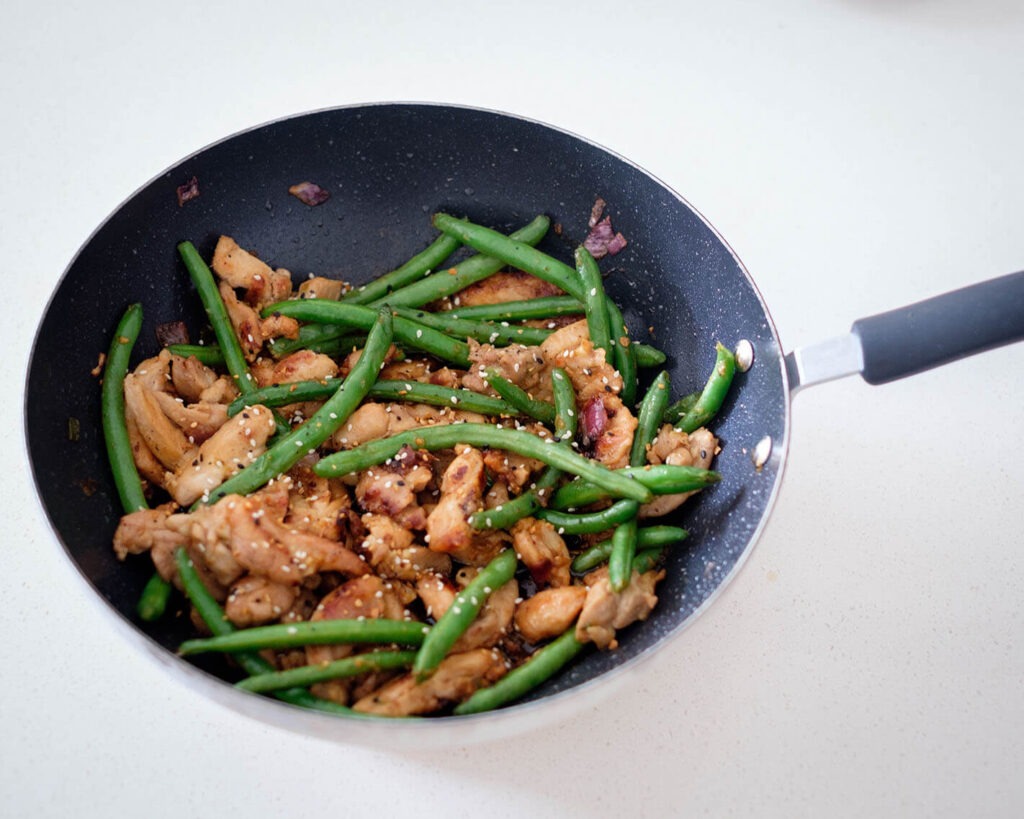
Most people miss out on this important step and realize after the fact that they don’t have the appropriate cooking equipment, pots and pans, or utensils readily available to prepare the food. Knowing what cooking equipment and utensils are available will determine the cooking methods and what ingredients you will need to buy.
Meal prep tip: If you’re looking for efficiency in the kitchen, it’s important to know how to maximize the kitchen space. For example, you don’t want to cook all recipes that require a lot of attention such as cooking all stove top recipes. You’ll want to maximize the oven and cook what you can in the oven so that your hands are free to do other things while those items bake away.
3. Determine what kinds of food you like to eat and develop themes throughout the week.
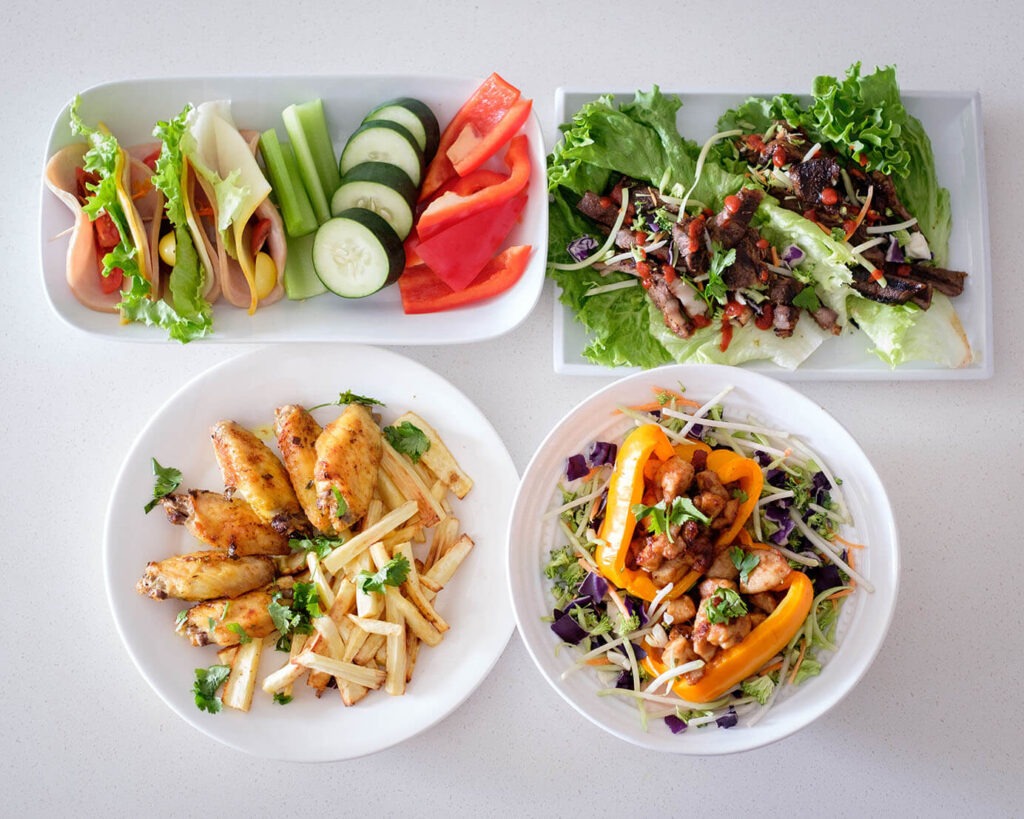
When starting, stick to familiar foods that you like and your favorite types of meals. Choose different cuisines for different flavors to keep it fun and exciting. For example, you may want to do taco Tuesday, Italian Wednesday, or stir fry Thursday. Also, identify if you have any recipes that you pinned from the internet and use them as a starting point. Find a core set of recipes with capsule ingredients that you like. Be sure to also take stock of what you already have on hand and see if there is already something there you can use. For example, do you have any frozen meats/veggies, or canned beans, pasta sauces, grains, and beans?
4. If you are wanting to ensure you are planning healthy meals, you’ll want to incorporate multiple food groups to provide a variety of nutrients.
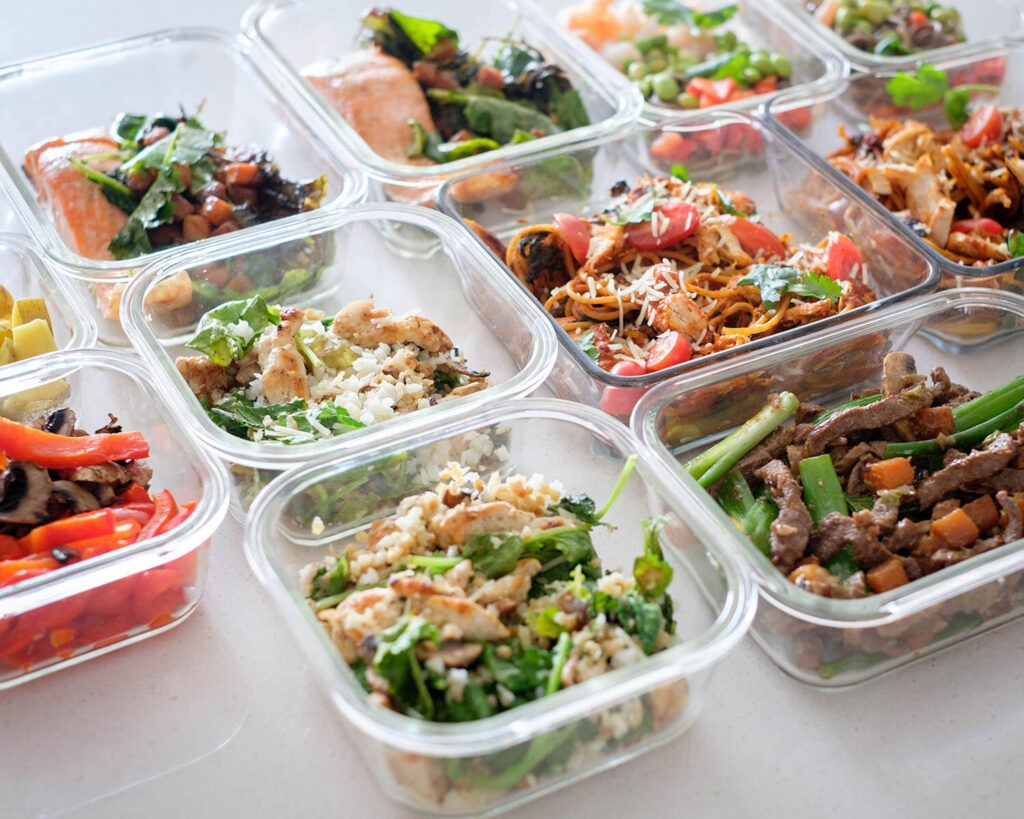
If you are wanting to ensure you are planning healthy meals, it is important to incorporate foods from all major food groups such as carbohydrates, proteins, milk and dairy products, fruits and vegetables, and fats to compose healthy balanced meals. You’ll want to incorporate multiple food groups because it will provide a variety of nutrients.
Start with picking out your choice of proteins and mix them up in a variety such as chicken, lean beef, fish, and meatless options such as legumes.
Then, determine which side dishes will pair well with your proteins and always include a variety of colors. Incorporate a variety of fresh and colorful vegetables and fruits. Always look for seasonal items and nutrient-dense foods such as dark greens, bright red peppers, blueberries/ raspberries. Add complex carbs with high fiber such as whole grains, quinoa, oats to help complete your meals.
Always ensure that half of your plate should be composed of whole fruits/non-starchy vegetables, a quarter should be whole grains/starchy vegetables, and a quarter protein.
When picking your ingredients, plan leftovers and extras. If you have too much of one ingredient, determine how you can split up the amounts and overlap them in different recipes to avoid food waste. For example, you can use roast chicken and broccoli for a sheet pan recipe and also cook chicken and broccoli in a stir fry. Cook them in a variety of ways to keep it interesting. Also keep in mind if you need to make larger batches for sides such as quinoa for monday and also in your soup for wednesday..
If you will plan meals weekly, prepare staple foods that you can do weekly that you enjoy such as egg muffins, taco meat, roasted chicken, etc.
Keep in mind to also stock up on nutritious snacks such as grab and go fruit, wash and chopped fresh veggie sticks such as celery, carrots, and sliced cucumbers, whole grain crackers, protein choices such as low-fat deli turkey slices, almonds or other nuts and seeds
5. Once you have a plan, pick a day of the week to do your groceries and do the shopping for all ingredients at once. Decide whether to do the shopping yourself in the store, order curbside or receive direct delivery to your house.
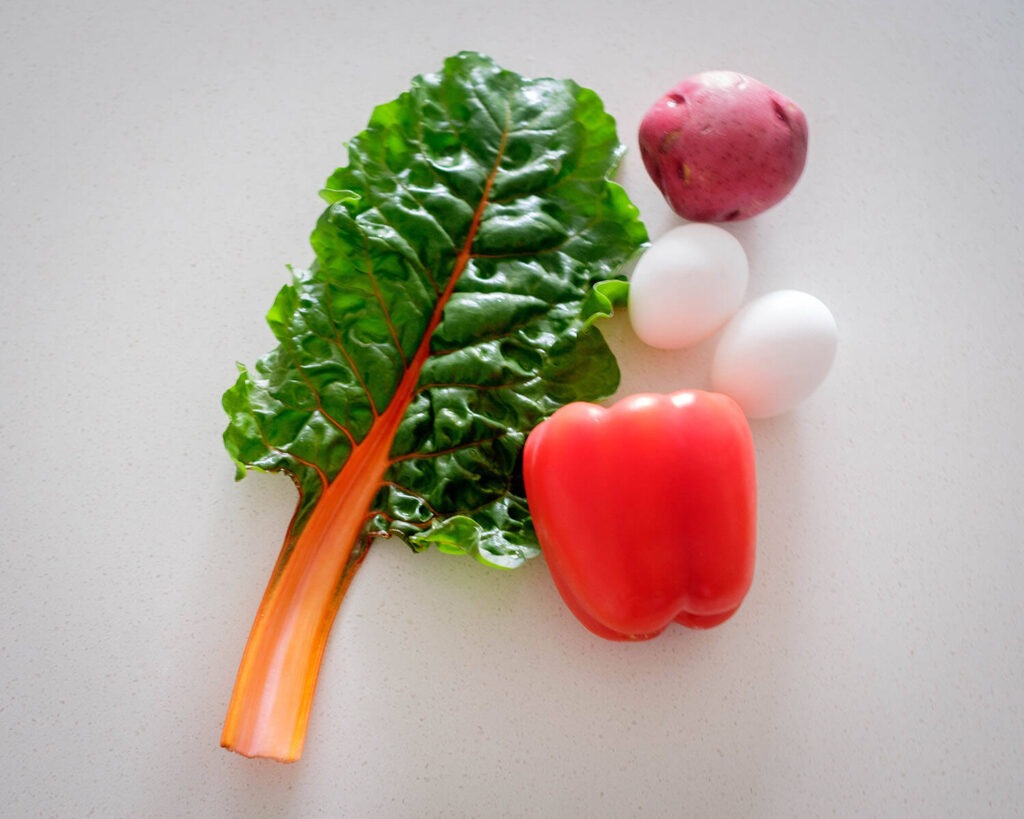
Before you go grocery shopping, make a list of all the ingredients you need for your recipes. Be sure to check your pantry and fridge for ingredients that you already have on hands such as canned foods, grains, spices/seasonings, oils and vinegars. Be sure to stock up on grocery staples such as lunch meats, tortillas, tea, salad dressings, etc
And if you are on a budget, many online grocers and online grocery apps can help you with pricing. You can get an estimate of your total grocery bill before even purchasing. This will help you determine if you need to swap out some ingredients for cheaper ingredients. For example, you may opt out baby kale for arugula if it’s cheaper. Or chicken tenderloins instead of chicken breasts.
6. Schedule and set aside time to dedicate prep
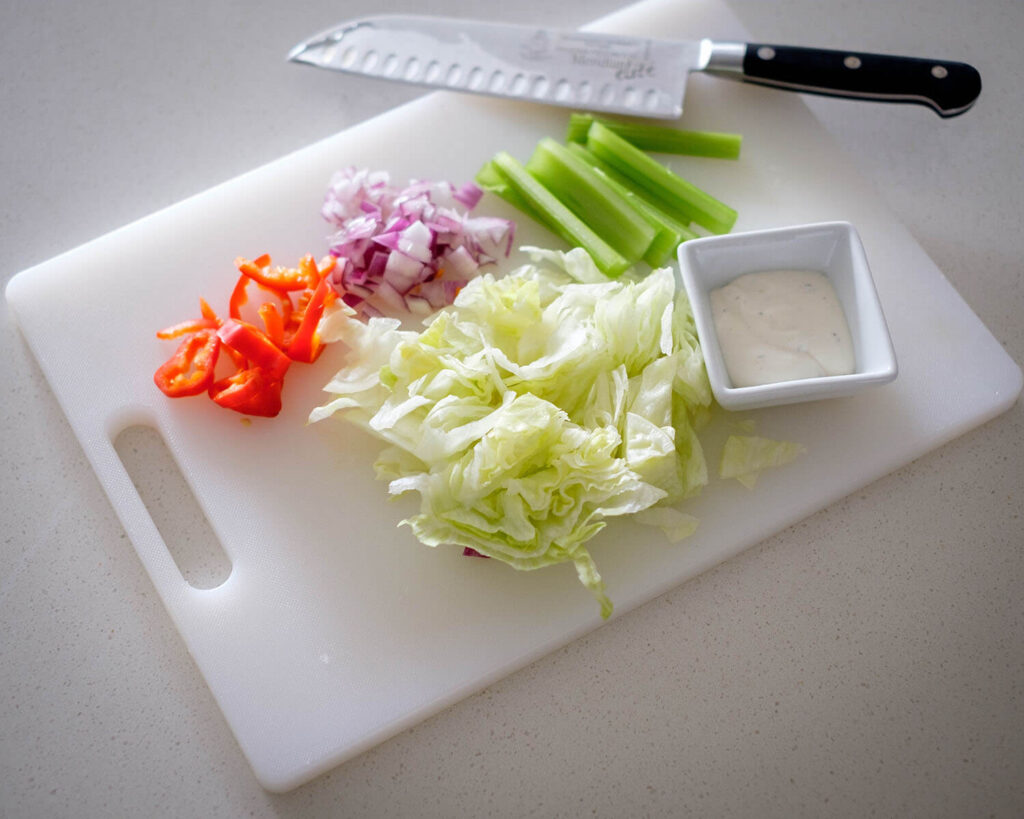
Identify when you will prepare food and what kind of prep you will do. Will you meal prep in advance all in one day or will you prep daily. On prep day, focus first on foods that take the longest such as oven baked proteins, then move on to a quicker recipe while that item is baking. Ensure you have the proper storage containers readily available
If you are new to meal planning, it is good to keep a diary of what you planned, what meals you actually ate and enjoyed, and use that information to adjust for future weeks. Within time, you will learn to know what works well for you.
And if you are looking to incorporate healthier prep options during the week but don’t want to hassle with the meal planning, then check out our pre-set weekly meal plans filled with a variety of recipes, organized grocery lists, and step by step instructions.

